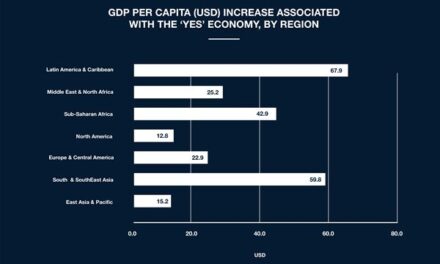
Taxes: Biden’s stimulus provides larger single-year tax breaks than Trump’s or Reagan’s cuts

The tax breaks are 70% larger than those in any single year of the Republicans’ 2017 Tax Cuts and Jobs Act, as a share of the economy, and also greater than the first year of former President Ronald Reagan’s 1981 tax cuts, according to the non-partisan Tax Policy Center.
The catch? Most of the breaks in Biden’s package last only one year — with nearly all of the effect occurring in 2021 and 2022.
The stimulus is projected to lower the total Americans pay in taxes by nearly $500 billion in fiscal 2021, according to Congress’ Joint Committee on Taxation. That’s about equal to 2.25% of the nation’s economy.
The only measures that were bigger were those in 1945 and 2010, according to Howard Gleckman, senior fellow at the center, whose historical comparisons are based on a 2013 paper by a former Treasury Department staffer.
By contrast, the tax cuts signed by former President Donald Trump and by Reagan amounted to about 1% and 1.2% of one year of GDP, respectively.
The 2017 cuts, which Trump falsely touted as the largest ever, were designed to slash taxes by about $1.5 trillion over 10 years — though its individual tax cuts are set to expire after eight years, in 2025.
Reagan’s measures would have been larger on an average annual basis, except that Congress wound up countering them with tax increases soon after.
Biden and congressional Democrats are already pushing to make key provisions of its coronavirus relief package permanent — including expansions of the child tax credit, the earned income tax credit and the Affordable Care Act premiums subsidies. If that happens, the breaks would approach the size of the 2017 law, Gleckman said.
And the President said Wednesday he is also open to raising taxes on those making more than $400,000 a year to pay for infrastructure and other programs going forward — but pledged that those making less would not see “one penny” in tax increases.
Biden’s cuts for lower-income and middle-class households
The relief law is projected to reduce federal taxes by an average of $3,000 per household in 2021 and raise after-tax income by 3.8%, according to the Tax Policy Center. Families with children would get an average tax cut of more than $6,000.
However, there’s a stark contrast between who benefits from Biden and Trump’s packages.
Low- and moderate-income households — those making $91,000 or less — are set to receive nearly 70% of the tax benefits from the most recent coronavirus relief law, the center found. The calculation includes the $1,400 stimulus checks, which has the largest impact, and several tax credit enhancements.
But nearly half of Trump’s cuts went to households in the top 5% of the income distribution — who made about $308,000 — in 2018.
Those making $25,000 or less will receive an average tax cut of $2,800 this year from Biden’s package, boosting their after-tax income by 20%. Under the Trump tax measure, these households saw a $60 reduction, on average, in the first year, or about 0.4% of their after-tax income.
Middle-class taxpayers will see their federal levy decline by an average of $3,350, or 5.5% of after-tax income, this year. The Trump law cut their taxes by about $930, or 1.6% of after-tax income, on average.
The highest-income 0.1% percent of households enjoyed a tax cut of $193,000, or 2.7% of after-tax income, from the 2017 tax act. They will receive nothing from Biden’s package.
















